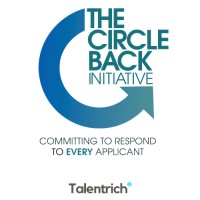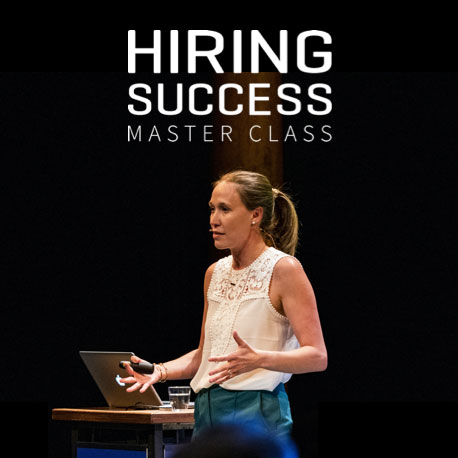Article Highlights
- Spotlight: Candidate Experience
- The 5 Steps We Should all Take to Improve the Candidate Experience
- Candidate Feedback: Your 2021 Resolution
Candidate experience is still a pain point for most organizations. The crux of the problem? Lack of feedback. In fact, it’s the number one complaint of candidates for a number of years. Most job seekers have at some time or other experienced the dreaded application ‘black-hole’, or worse, been ‘ghosted’ completely by a company later in the recruitment process. Anecdotally, I recently did a LinkedIn poll of my own network and found that half of the connections who responded had the experience of being ignored after an interview.

This year, some organizations are now taking a stand for candidate experience by joining a new movement called The Circle Back Initiative. Launched last year in Australia, the initiative asks its members to commit to responding to EVERY application in 2021. More than 50 companies have already joined our community of employers and taken a pledge to reach our 5 minimum standards of candidate experience throughout their recruitment process. We want to share those standards with anyone looking to improve their own recruitment experience.”
We’ll dig into each one, but first, let’s take a look at why this pledge is needed in the first place.
Spotlight: Candidate Experience
As recruiters, we can sometimes forget the time and energy invested by candidates in honing their CVs, composing cover letters, tailoring job applications, and preparing for interviews. Sure, in our job, we can be overwhelmed by the sheer volume of applications or frustrated by a lack of quality. Maybe we don’t have the right tools or processes in place to feedback to candidates effectively. However, whatever our challenges, we must never forget there’s a real person behind every application.

We should all be familiar with the consequences of a poor candidate experience by now: Fewer job offers accepted, negative employer brand impact, and maybe even lost business & revenues. In short, if we’re happy to share a vacancy externally it’s only fair that we take ownership of the response and commit to responding to every applicant.
To ignore an application at the best of times is a slap in the face for any candidate. In the current climate, with so much hope, anxiety, and stress pinned to each job application, it can feel more like a psychological blow. Considering this, and the reality of rising application volumes, how do you make sure you’re not that company? You know the one who leaves their candidates hanging.
The 5 Steps We Should all Take to Improve the Candidate Experience
Ensure that you’ve underpinned your recruitment process with a robust feedback loop that not only safeguards your candidate experience but also protects your employer brand and here’s how…
1. Ditch the “only successful candidates will be contacted” tagline
There are many versions of the above statement, and they are all bad. You’re essentially telling the candidate, in what is likely their first touchpoint, that this process will be impersonal. Our industry is notorious for blah job descriptions. Remember, the job description should be compelling as they are an essential part of your talent attraction and engagement so anything you can do to differentiate yourself at this stage is critical.
Statements like ‘only shortlisted candidates will be contacted’ or ‘if you haven’t heard from us within two weeks, please assume you’ve been unsuccessful’ are not only bland, they’re condescending.
Here’s what goes through my mind when I see these statements:
- Why are you assuming that the majority of people applying are unqualified?
- Is this how you will treat me as an employee?
Sure, not every recruiter is a gifted copywriter, but you don’t have to be. The good news is that this is a quick fix. A new mandate, maybe a quick training session, and your recruitment team can stop including these kinds of dismissive statements overnight. That would be a great start. But why not go a step further, and take the opposite approach? Why not include a statement saying you GUARANTEE to respond to every applicant instead? Nail your colors to the mast and stand out from the crowd as a company that commits to candidate feedback!
2. Reply to every applicant, we mean every single one
Everybody who applies to your advert deserves to get a response. This can be as simple as an ‘application received’ message, which, with the right technology in place can be fully automated.
Even the most basic message will put a candidate’s mind at rest. After they’ve hit send on their application, the last thing they need is to worry that it never made it through.

Thinking practically, these messages should be used to set applicant expectations around timelines, next steps, and maybe even direct contact details should they need to make an inquiry in the meantime. However, with a little time, effort and creativity you can transform your automated messages from boring corporate templates into human-centric messages that reinforce your brand.
The smartest companies out there will also use these messages to include links to additional employer brand content or to direct applicants towards social media pages and online talent communities. Any application is the start of a new relationship with that individual, this is your chance to show applicants how you intend to start nurturing it.
3. Inform unsuccessful candidates that their application has been rejected
This step is critical to candidate mental health. You absolutely must notify every applicant as to the outcome of their application. For successful candidates this is inevitable, but for unsuccessful candidates (i.e. the majority) it’s often overlooked. Now, with all our tech, it’s easier than ever to do this.
It can be as simple as a bulk email with a standard rejection email if you want – at least that lets people know where they stand. However, in an ideal world, you’ll use the opportunity to thank the candidate and loop them into your talent pools for future jobs. You can even highlight some links to helpful job-seeker resources.
4. Protocol for candidates rejected after soft screening
If a candidate has progressed beyond your initial soft screening to complete an additional step like a psychometric test or telephone interview then, at the very least, they deserve an email notifying them of the outcome. Again, most good systems will take care of this for you, but even spreadsheets can be used at a very basic level to mail merge and send bulk messages, albeit not ideal,
For a truly sound experience, you should explore personalizing each message as much as possible. Can you let each candidate know their test results or provide insight into the strengths & weaknesses identified by the assessment? Can you include direct contact details for candidates to seek further feedback if required? Remember, it’s one thing to be told you’ve been unsuccessful but that can be hard to swallow if no explanation is provided.
The best companies will naturally want to take things a step further. They will often include links to educational resources, jobseeker resources, or company resources (including offers, discounts, promotions) that all help to take the candidate experience to the next level and help the candidate take some positive next steps in their job search after being knocked back.
5. Protocol for rejected candidates after an interview
Depending on your recruitment process, candidates may be required to attend a single, or multiple, face-to-face interviews (in person or online). For every interview, you should aim to provide every interviewee with personalized, verbal feedback on the outcome.
Every interview represents a high-level of investment from candidates. Not only will they need to take time out from their current role/life to attend the interview, but each interview requires preparation(not to mention anxiety). The same applies to in-person video interviews. The logistical demand might be lower, but the preparation and stress-levels remain the same (or maybe more, for those people less comfortable on-screen).
The traditional ‘gold standard’ here is a phone call from the recruiter or manager providing constructive, personalized feedback on their performance and reason for the rejection. But is a phone call always possible? For some companies with volume or bulk hiring, the sheer volume of interviews means those candidates further down the list could end up waiting for days to be contacted. Could this actually damage the candidate experience?
A rejection email is probably the bare minimum – and should only be used in the case of volume hiring. The majority of candidates expect at least a courtesy call after an interview, so you would need to set their expectations clearly by letting them know beforehand that you will be getting back to them by email if this is your chosen method.

Are there any other alternatives? Well, video feedback messages are one option. A personalized video message can be more efficient than calling and leaving multiple messages for candidates, and there’s also an argument they’re more convenient for candidates who can watch at their leisure and don’t have to endure any ‘uncomfortable’ rejection conversations.
While the best method might be up for debate, the need to feedback properly to all applicants after attending an interview is most definitely not. Simply put, it’s not okay to ghost candidates after an interview – no matter who you are.
Candidate Feedback: Your 2021 Resolution
So, how does your candidate experience compare to the steps above? If you already meet or exceed the guidelines you already qualify to become a Circle Back Initiative employer. The initiative is free to join, and all members receive the Circle Back Initiative emblem to display on their careers site to let candidates know their application is in safe hands.
A lot of these points boil down to your management and operations model, if you have the right tech on your side most of these initiatives can be automated. You’ll want to review your processes and the tools available to see what you can achieve with what you have now.If you are interested in joining the over 50 employers who are already part of the Circle Back Initiative, please visit the linked site. Remember, by championing those companies doing a great job, the initiative aims to shine a light on candidate experience in 2021 and help drive positive change across the industry.

 Enroll in the Master Class & earn 6 SHRM credits
Enroll in the Master Class & earn 6 SHRM credits